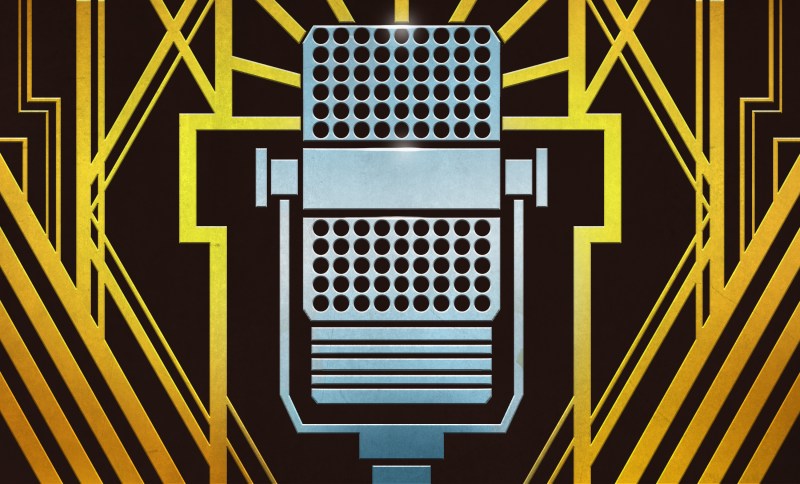This week, it was Kristina’s turn in the hot seat with Editor-in-Chief Elliot Williams. First up in the news: Germany’s solar and wind power generation have resulted in excess energy, which some people think is bad. In Hackaday news, the entries in the 2024 Business Card Challenge are really stacking up.
Then it’s on to What’s That Sound, which Kristina provided this week and managed to stump Elliot. Can you get it? Can you figure it out? Can you guess what’s making that sound? If you can, and your number comes up, you get a special Hackaday Podcast t-shirt.
Then it’s on to the hacks, beginning with an improved spectrometer that wasn’t easy, and a rotary phone kitchen timer that kind of was. We’ll talk about badges turned invitations, reinventing rotary switches, and dynamic button blobs. Finally, we get the lowdown on the state of nuclear fusion, and posit why chatting online isn’t what it used to be.
Check out the links below if you want to follow along, and as always, tell us what you think about this episode in the comments!
Download and savor at your leisure.
Episode 273 Show Notes:
News:
What’s that Sound?
- Fill out this form with your best guess, and you might win!
Interesting Hacks of the Week:
- An Improved Spectrometer, No Lasers Required
- Rotary Phone Lives On As Arduino Kitchen Timer
- Reinventing Rotary Switches With Stepper Motors
- Adafruit Badges Turned Electronic Invitations
- Hunting For Part Numbers: Analyzing The Buck Converter On Mini 560 Modules
- Dynamic Buttons Are Weird Blobs You Can Press
Quick Hacks:
- Elliot’s Picks:
- Kristina’s Picks:

















Having negative prices for power is not a good thing, because the reason the price is negative is that someone is paying for the power anyways. That is the only reason the solar/wind producers are able to put it on the grid: they’re not paying, they’re getting paid to do it. If they weren’t getting paid, they would just shut down the inverters because they would be losing money.
Whether by net metering or producer subsidies, or some other incentive, it’s tax money and surcharges collected off of electricity prices that pays for the producers to put the power out there, so it’s actually YOU who’s paying for the power distributors to take the negative priced power and sell it to you at positive prices. You’re just handing them free money out of your pocket.
In countries where you don’t have price guarantees that extend below zero, they do shut down the turbines and solar inverters when the grid is full – and they get paid “curtailment compensation” to do it, so you’re paying them to NOT produce power.
Either way, it’s a stupid situation to be in, and the reason we’re facing this case is because they’ve incentivized the construction of too many generators while neglecting the infrastructure to support them.
The situation is most dicey when the power grid is near capacity for demand, which is when you’d expect the renewables to be a welcome addition, but they’re not. This is because the variable output can trip the whole system. Instead of risking grid failure, the VREs are turned off and gas fired generators substituted instead. This is most dire in isolated grids, like the UK.
https://www.nsenergybusiness.com/features/examining-challenges-costs-wind-farm-curtailment-uk-energy-market/
” According to UK Wind Curtailment Monitor data, in 2022 consumers paid £215 million to turn wind farms off, and £717 million to buy gas-fired power to make up the difference. And National Grid forecasts that levels of curtailment will increase fourfold by 2030, with costs forecast to reach £2.5 billion a year by the end of this decade.”
Elliot says: “We put out an article this week on the end of ICQ, which is shutting down on June 26th, which was oh a few days ago as we record this.”
Is there something you’re not telling us, Elliot? Also, please email me the stock prices from the future for Tesla and Apple as well as the scores for Soccer, baseball and any other major sports events. Thank you.
I would like to know the results of the 2024 election here in the States…
Elliot mentioned being in airplane mode so as not to be bothered by texts. I recently discovered that you are only turning off the transmitter on your phone. You can still receive texts. I recently started putting my phone in airplane mode when going to bed, and was very surprised that i has emails and texts in the morning.
So people can still bother you when you don’t want to be.
You need to be subscribed to the network to keep receiving data, and it needs two-way communication to work. It’s not possible to get emails without having your transmitter on, since it’s not a one-way protocol. You have to ask before you receive.
What might have happened is, you turned your cellular radio off but not the WIFI. The airplane mode doesn’t necessarily involve bluetooth or any other local wireless connection, and this is permitted in most countries.
It’s just the high power cellular radio that has to shut down, since otherwise you’d have a plane full of people with cellphones trying in vain to connect to ground stations they can barely receive. It could easily add up to hundreds of Watts of radio noise.
My phone says the airplane mode shuts down all radios, but you can turn WiFi and Bluetooth back on while you’re in airplane mode, and then it will automatically remember that setting for the next time.